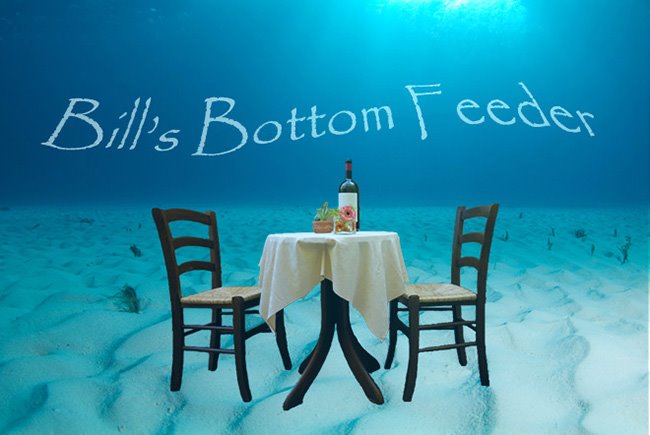Well, what does the feeder write about when he really
doesn’t have anything to write about in particular? Well, just kind of banal stuff, like some
books I have recently read related to food and cooking (go figure).
One was “Sous Chef –
24 Hours on the Line” by Michael Gibney. It is another in the “Kitchen
Confidential” genre, that is, it takes you through 24 hours in the life of a
Sous Chef in a “modern American” restaurant in Manhattan. It is written in the second person which kind
of brings you into the experience. “you
check the walk-in to make sure the deliveries….”; or “you hear chef call out the ticket, and
you respond “yes, Chef” as do all the line cooks”. It takes you through the
morning checking duties, through lunch service and then dinner service and the
pressures to get the food out. A pretty
thorough accounting of how things go from ticket to the pass for serving. I thought it started kind of slow but you get
sucked in. It has pretty graphic
language and a host of terms related to kitchen equipment, tools, processes,
etc. Most of them are not explained in the text (do you know what the “piano”
is?). Fortunately there is a pretty
exhaustive glossary included in the back.
I of course have never worked or observed such a situation, but I
suspect it is fairly accurate, it sort of mirrors Gabby Hamilton’s “Blood, Bones, and Butter”. Both are pretty good reads.
I just finished “The Life of the Restaurateur”, by Nicholas
Lander.
Nicholas is a Brit, and is the food writer/reviewer for the
Financial Times. While the two books
above (along with Anthony’s “Confidential”) are pretty much the back of the
house stuff, Nicholas moves us to the front.
He was the owner of the highly successful L’Escargot in Soho during the ‘80’s. His book is basically a series of stories
distilled from interviews with other restaurateurs from all over the
world. Most of the names I was
unfamiliar with, but some not. You may
have heard of Hazel Allen of Ballymaloe, Ireland, or perhaps Joe Bastianich of
Babbo in New York, but how about Juli Soler of elBulli in Spain or Marie-Pierre
Troisgros from Maison Troisgros in France.
Most of the restaurants are Michelin starred and enjoy national
recognition. Each profile goes into how
the particular individual came to opening or renovating a restaurant, whether
through the kitchen or a love of food and people. It is fairly illuminating, and made me aware
of things that go into making a restaurant successful over a long period of
time.
You don’t just hire a big name chef plunk down a bunch of
tables and stand back and wait for the cash to roll in. I thought this was an
interesting quote: “Neither Drew
Nieporent (Nobu, New York) or Alan Yau (wagamama, London) could have been more
specific: the success of their diverse restaurants over the past twenty five
years has rested firmly on the intense management of their internal space, and
this element has become almost the most fascinating part of their plans for any
proposed new site. The issue is that those whose space has not been correctly
planned, discussed, and then laid out will always be less profitable than they
should have been.” He goes on to talk about “dead space” (non revenue
producing) like reception, walk ways to lavatories, storage facilities,
manager’s office, etc.. Those
thing have to be carefully thought of and put into the plan. It’s a fascinating book, has lovely
illustrations, of the restaurateur
And their restaurants
A food book with kind of a different slant…
In that book there was a reference to: “The Great Chefs of
France”, published over thirty years ago that for the very first time documented
the professional lives and achievements of the all the three-Michelin-starred chefs
of France (at that time). The magic of credit cards and
Amazon had it in my hands three days later.
Besides the bios of the chefs, there are wonderful black and
white photos by Anthony Blake
It also has a nice history of the evolution of French
Cuisine, from Escoffier forward. Another
good read.
What all of these books do for me is further convince me
that I never want to own a restaurant, or cook in one. Long hours, tortuous conditions, often difficult personalities, and usually not very much money.
In the beginning of “Great Chefs” the author goes through an almost hour
by hour day in the life of the chefs beginning with entries like:
6am: Francois Bise is
already in his kitchen making croissants for breakfast for his overnight guests
…….
11:45am Raymond Thuilier is tasting sauces, while his
patissier’s handiwork is being arranged for the dessert Trolley
And so on, up until
12:00(Midnight): Roger Verge and Louis Outhier may still be
offering hospitality as if they had all the time in the world.
He concludes by saying: “The
chefs who live through such a day as this are not slaves, nor are they driven
by financial greed. They are artists
dedicated to the pursuit of excellence. They
could come from only one country – France”
While the latter part of that thirty year old statement might not be quite true today, the
sentiment is. Thank goodness there are
those that dedicate their lives to putting wonderful food on my plate. It’s a tough life.. Thank you. and one of the reasons why I
DFD







No comments:
Post a Comment